 |
Infectious Diseases: Daily Health Check |
1.00 |
This course is focused on the daily health check, and how it relates to policy guidelines about whether or not children with symptoms of infectious diseases can participate in program activities.
Course Learning Objectives:
Describe the elements of a daily health check.
Discuss how daily health checks relate to policy guidelines about whether or not children with symptoms of infectious diseases can participate in program activities. |
 |
Infectious Diseases: Causes and Symptoms |
1.00 |
An infectious disease is an illness that is caused by organisms such as bacteria, viruses, fungi, and parasites. Many of these organisms live in or on our bodies, and are normally harmless. But under certain circumstances, they can cause disease.
Course Learning Objectives:
- Describe infectious disease, and the ways in which germs that can cause infectious disease are spread.
- Identify common symptoms of infectious diseases, and why young children are vulnerable to infectious diseases. |
 |
I Am: Supporting Self-Awareness and Self-Management |
2.00 |
Children and youth develop social-emotional skills and character over time and through a variety of experiences.
Expanded Learning Programs strongly support three foundational areas of Social-Emotional Learning and Character Building:
- I AM (Interpersonal Connections)
- I BELONG (Interpersonal Connections)
- I CAN (Belief and Mindset)
This course focuses on the I Am skills.
By the end of this course, you will:
- Understand how young people's responses affect personal emotion and behavior.
- Learn how group agreements can support self-awareness and self-management in children and youth.
- Learn strategies and resources to support I Am skill building with children and youth. |
 |
HEPA Standards 2.0 and the Self-Assessment Tool |
1.00 |
In 2011 the National AfterSchool Association adopted standards for healthy eating and physical activity (HEPA) in out-of-school time. In 2018, the HEPA Standards were updated to Version 2.0.
This interactive e-learning course, commissioned by the Kentucky Out-of-School Alliance (KYOSA) and designed by CypherWorx, will explain how the HEPA Standards were created and how they should be used, as well as presenting the Standards in their entirety. We will also cover the HEPA Standards 2.0 Self-Assessment Tool and how to use it. |
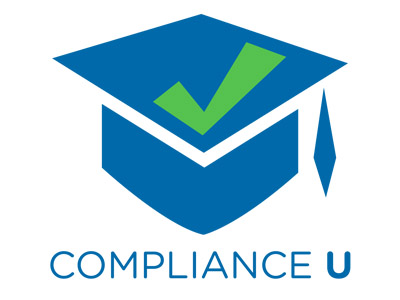 |
Healthy Bodies: Promoting Good Nutrition and Physical Activity in Child Care |
1.00 |
This course will give you a broad overview of how to instill healthy habits at an early age. It will provide you with information about the nutritional needs of children and the benefits and risks associated with physical activity levels. Strategies will be given to use this knowledge in the classroom. |
 |
Food Allergy Basics: Symptoms and Triggers |
1.00 |
Welcome to Food Allergy Basics: Symptoms and Triggers. This course identifies the symptoms and triggers of food allergies.
Course Learning Objectives:
- Define food allergy.
- Identify the foods that cause 90% of all food allergies.
- List the symptoms of food allergies. |
 |
Food Allergy Basics: Preventing Reactions |
1.00 |
Welcome to Food Allergy Basics: Preventing Reactions. This course is focused on ways to prevent accidental exposure to foods that can cause an allergic reaction.
Course Learning Objectives:
- Describe ways to prevent accidental exposure to foods that cause an allergic reaction.
- Demonstrate how to read a food label to reduce the risk of accidental exposure to foods that can cause an allergic reaction. |
 |
Food Allergy Basics: Emergency Response |
1.00 |
Welcome to Food Allergy Basics: Emergency Response. This course is focused on how to use a Food Allergy and Anaphylaxis Emergency Care Plan to care for a child with a food allergy.
Course Learning Objectives:
- Explain the correct use of the Food Allergy and Anaphylaxis Emergency Care Plan.
- Identify the six rights of medication administration. |
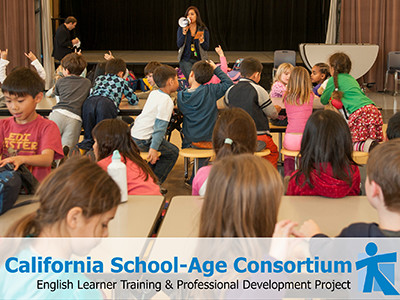 |
English Learner Socio-Emotional Factors and Typologies Review |
0.50 |
This course serves as a compliment to Knowing English Learners, an in-person training offered through CalSAC's English Learner Training and Professional Development Project. This review course is for CalSAC EL Trainers and participants. CalSAC Trainers can use this module as a way to brush up on the Socio-Emotional Factors and English Learner Typologies before conducting a training, and participants can use the module to further their understanding of the Factors and Typologies. |
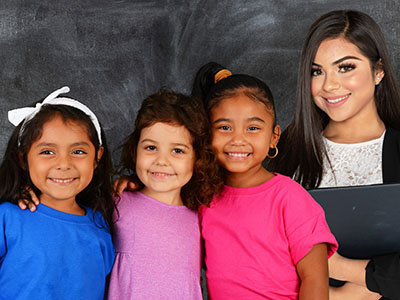 |
English Language Learners |
1.00 |
This course will give you a greater understanding of the circumstances under which some English language learners came to the U.S. and the challenges they may face. Strategies for teaching language acquisition skills will be provided, and you will learn the importance of collaborating with families and communities. |
 |
Engaging Middle School Youth in College & Career Readiness |
1.00 |
This course will introduce participants to the College & Career Readiness Toolkit, developed by the Maryland Out-of-School Time (MOST) Network, as well as developmentally appropriate activities and considerations for implementing college & career readiness with middle school youth in an out-of-school time setting. |
 |
Engaging High School Youth in College & Career Readiness |
1.00 |
This course will introduce participants to the College & Career Readiness Toolkit, developed by the Maryland Out-of-School Time (MOST) Network, as well as developmentally appropriate activities and considerations for implementing college & career readiness with high school youth in an out-of-school time setting. |
 |
Engaging English Learner Families and Communities |
2.00 |
This online course serves as a compliment to Healthy Cultural Identities and Engaging Families and Communities, an in-person training offered through CalSAC's English Learner Training and Professional Development Project. This course will help participants go deeper and gain more examples and strategies related to some of the 5 Tips for Engaging English Learners' Families and Communities introduced in the training. |
 |
Energy and You! |
2.00 |
CalSAC has partnered with the Pacific Gas & Electric Company (PG&E) to bring the Energenius® Out-of-School Time Program to our online training platform. This FREE environmental stewardship curriculum is designed to engage children and youth to think about how they use energy, how energy is measured, paid for, and ways to save energy. Children and youth will understand how they can help reduce the impacts of energy use and production on the environment, and also practice influencing others to take energy-saving actions. Additionally, the curriculum is uniquely and intentionally designed to engage families in energy and water conservation habits.
Energy and You is Activity Guide #1 in the 4-part curriculum Energenius® Out-of-School Time Program. The curriculum and activities are designed to engage children and youth to think about how they use energy, how energy is measured and paid for, and ways to save energy. This course will prepare participants to deliver the activities from the Energy and You Activity Guide as well as connect families to resources to help save energy and money. |
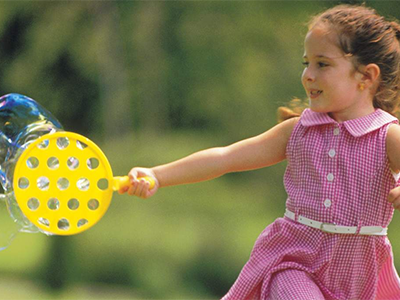 |
Energy and the Environment |
2.00 |
CalSAC has partnered with the Pacific Gas & Electric Company (PG&E) to bring the Energenius® Out-of-School Time Program to our online training platform. This FREE environmental stewardship curriculum is designed to engage children and youth to think about how they use energy, how energy is measured, paid for, and ways to save energy. Children and youth will understand how they can help reduce the impacts of energy use and production on the environment, and also practice influencing others to take energy-saving actions. Additionally, the curriculum is uniquely and intentionally designed to engage families in energy and water conservation habits.
Energy and the Environment is Activity Guide #2 in the 4-part Energenius® Out-of-School Time Program. The curriculum and activities are designed to engage children and youth in understanding how energy is produced, where energy comes from, and some impacts of energy use and energy production on the environment. This course will prepare participants to deliver the activities from the Energy and the Environment Activity Guide as well as connect families to resources to help save energy and money. |
 |
Dyslexia |
1.00 |
This course will provide you with an overview of dyslexia to help you understand what it is all about, the challenges a student with dyslexia faces, and the best ways in which teachers can effectively support students with this disability. |
 |
Down Syndrome |
0.50 |
This course will help you understand the unique characteristics that children with Down syndrome possess and the challenges that they face. It will provide you with knowledge on how to create the best learning environment possible to meet their needs by giving you specific ways to plan your curriculum and ways in which you can encourage communication. You will feel prepared to make accommodations to welcome children with Down syndrome into your classroom. |
 |
Development and Characteristics of Learners for Teachers |
1.00 |
Development and Characteristics of Learners will assist you in fostering a solid understanding of how children develop and the disability categories that may impact their learning. This course will also help you gain invaluable insight into ways you can support children and meet their needs. |
 |
Dance for Joy: Movement, Music, and Rhyme |
1.00 |
This module from Dance for Joy will provide teachers with resources and activities that can be used and modified to support physical, mental, social, and emotional development in young children.
This course covers 5 activities: I Touch My Nose, I Touch My Toes, Hold Yourself Tight, Wake Up Right, Reach One Way, Reach the Other, Locomotor Freeze Dance, Salt and Pepper Dance. |
 , ,  |
Dance for Joy: Confident, Calm, and Compassionate |
1.00 |
This module from Dance for Joy will provide teachers with resources and activities that can be used and modified to support physical, mental, social, and emotional development in young children.
This course covers 5 activities: Tickle the Sky, Tapping, Every Little Cell, We are One, Scoop up the Universe. |
 |
Cyberbullying |
1.00 |
Cyberbullying is bullying that takes place over digital devices like cell phones, computers, and tablets. Cyberbullying can occur through SMS, text, and apps, or online in social media, forums, or gaming where people can view, participate in, or share content. Cyberbullying includes sending, posting, or sharing negative, harmful, false, or mean content about someone else. It can include sharing personal or private information about someone else, causing embarrassment or humiliation. Some cyberbullying crosses the line into unlawful or criminal behavior.
In this course, you will:
• Learn the definition of cyberbullying
• Discover tactics on preventing cyberbullying
• Discover tips on communicating with parents and teachers, and how to report instances of cyberbullying |
 |
Creating a Safe and Respectful Environment for Our Nation's Children and Youth |
0.75 |
This course will provide you with the knowledge and skills to create safer, more inclusive environments for children. You will learn about the dynamics of bullying, the impact it has on those who are bullied, and strategies for prevention. |
 |
Child Abuse Prevention and Awareness for Supervisors and Managers |
1.50 |
If a staff member or volunteer in a child-related program approaches his or her supervisor with a case of suspected child abuse the supervisor must know how to handle the situation to ensure the safety of everyone in the program. This course provides supervisors with a wealth of information about how to recognize and prevent child abuse within program walls, and furthermore, the steps to take when a situation of child abuse arises. In addition, you will learn best practices for yourself, your staff and your organization.
|
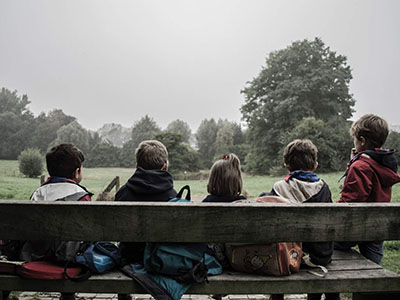 |
Child Abuse Prevention and Awareness for K-12 |
1.50 |
This course covers child abuse and prevention awareness. This course will help you develop new knowledge about students and will help you understand how children who may be abused can be helped within schools. |
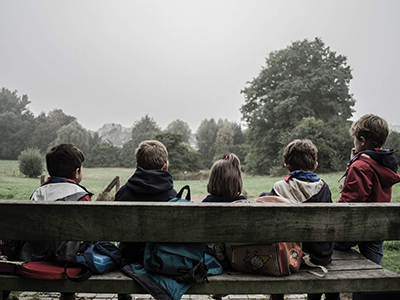 |
Child Abuse Prevention and Awareness |
1.25 |
Unfortunately, child abuse is a prevalent issue in today's world. Child care workers and volunteers, coaches, and others who work with children must be knowledgeable about the topic to ensure children's safety. This course will make you aware of the many issues related to child abuse and help you recognize and prevent child abuse within and outside of program walls. It offers advice about how to respond to a child who divulges abusive information and what to do with this information. As someone who works with children you will learn how to protect the child, your organization, and yourself from accusations of abuse. |



















 ,
, 






